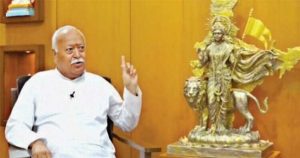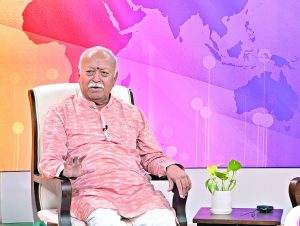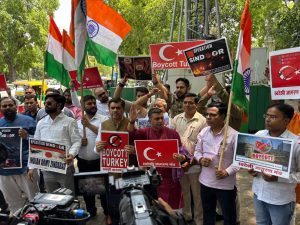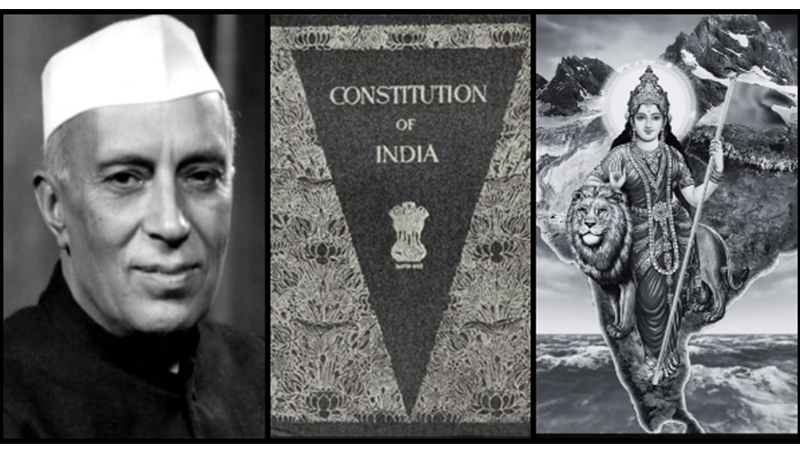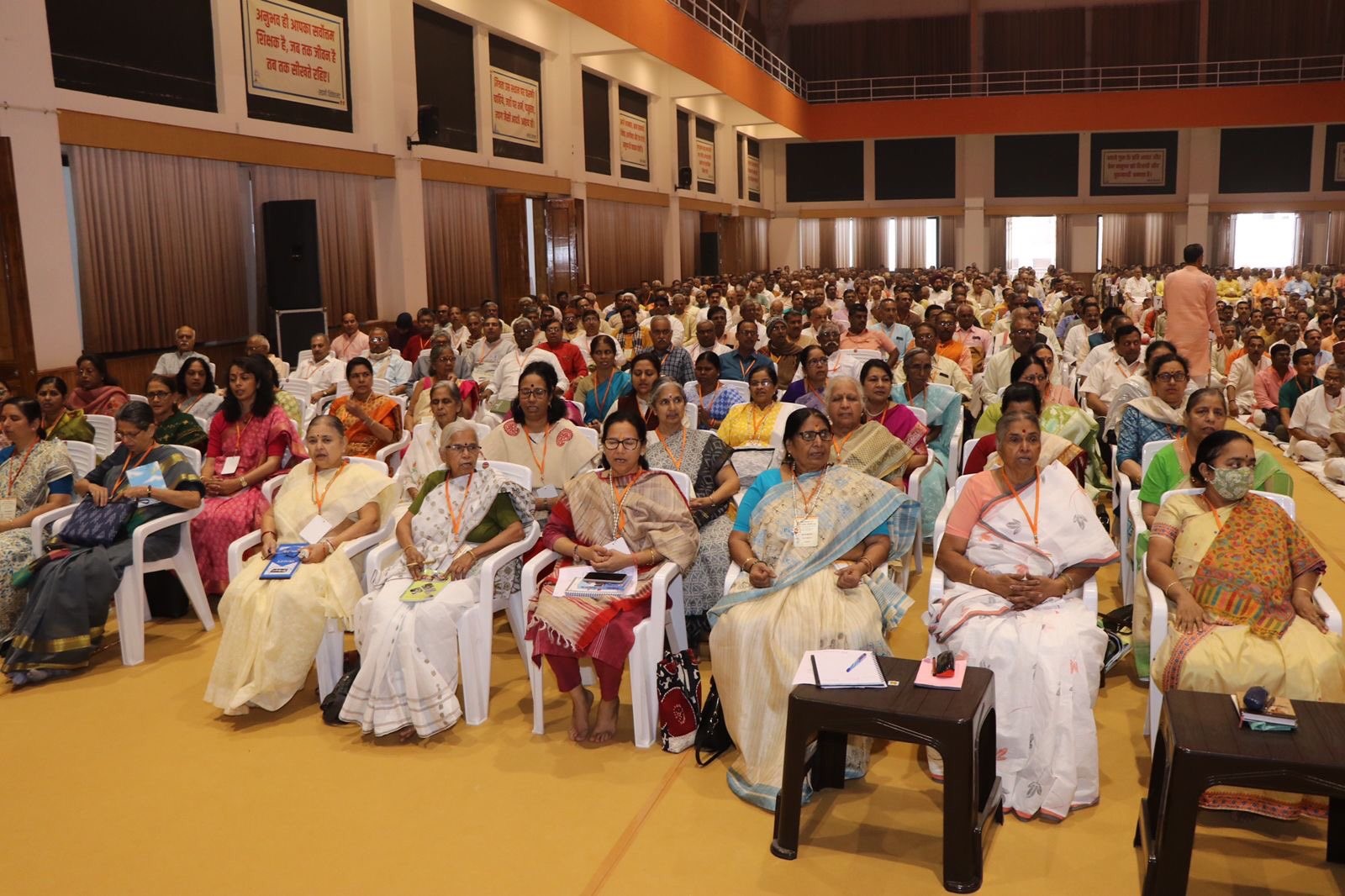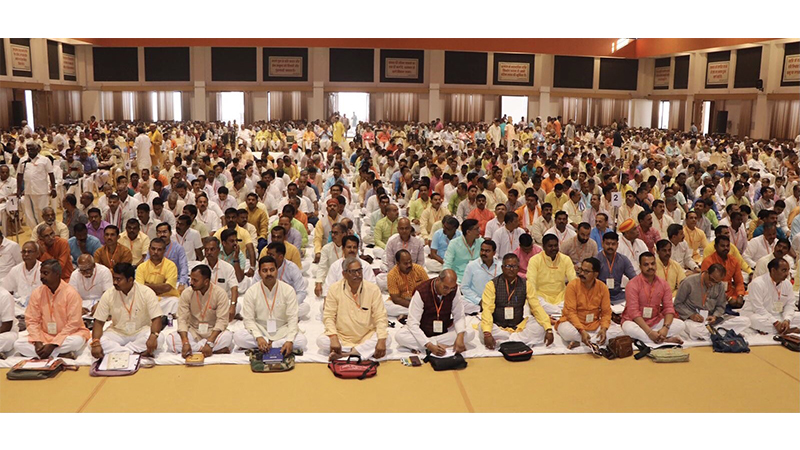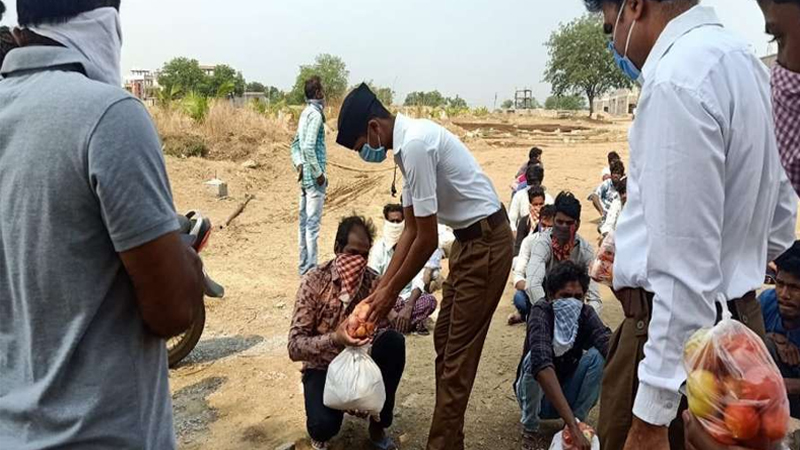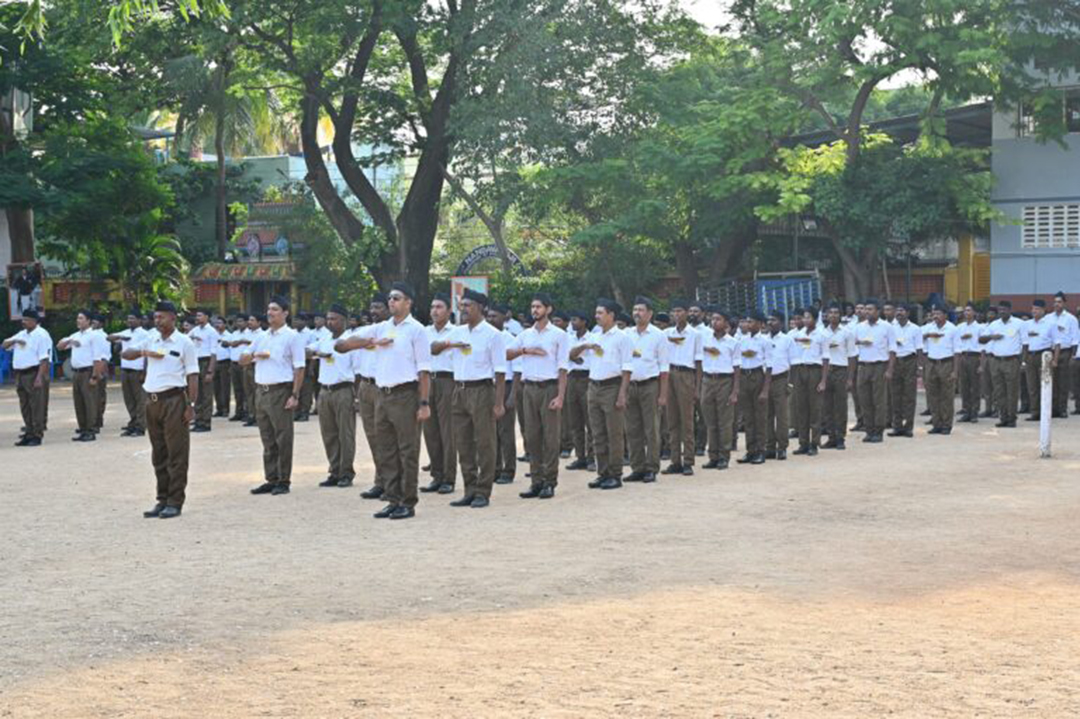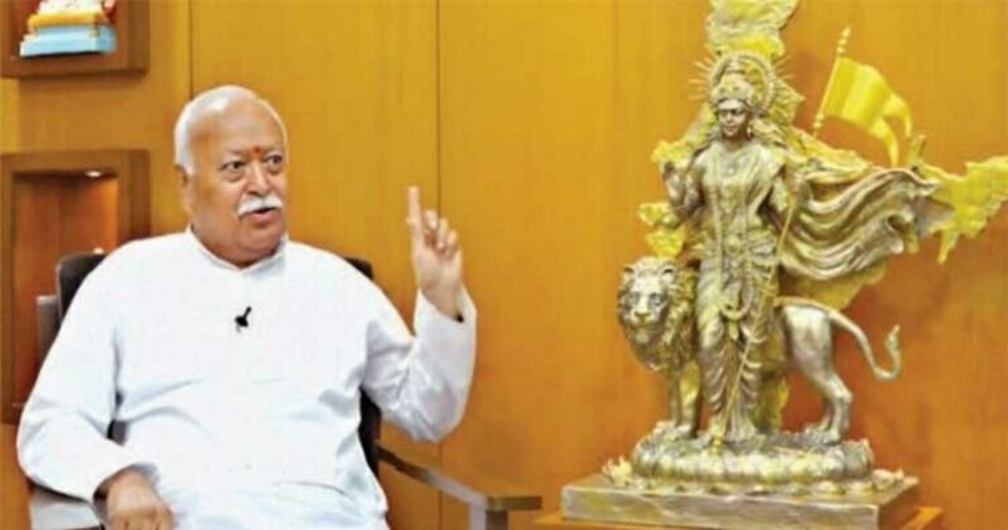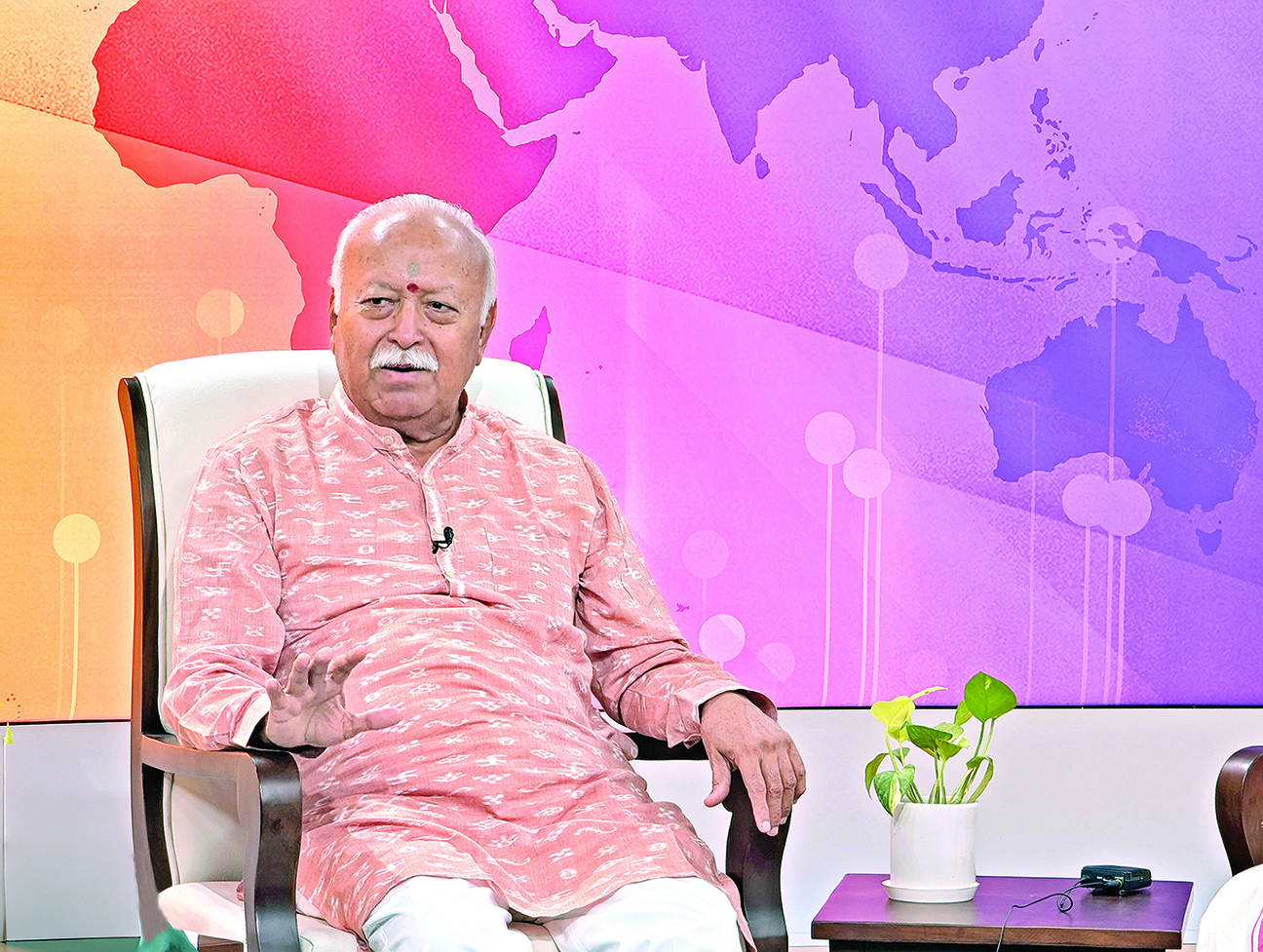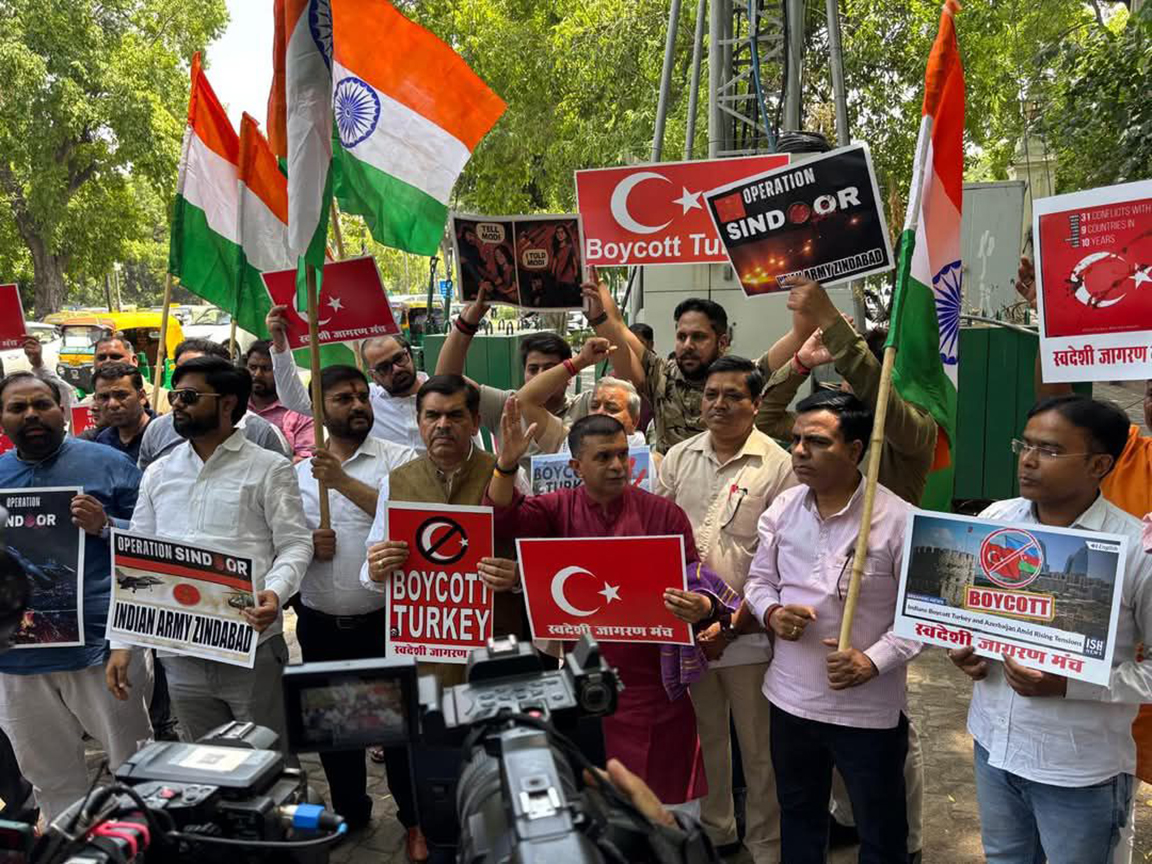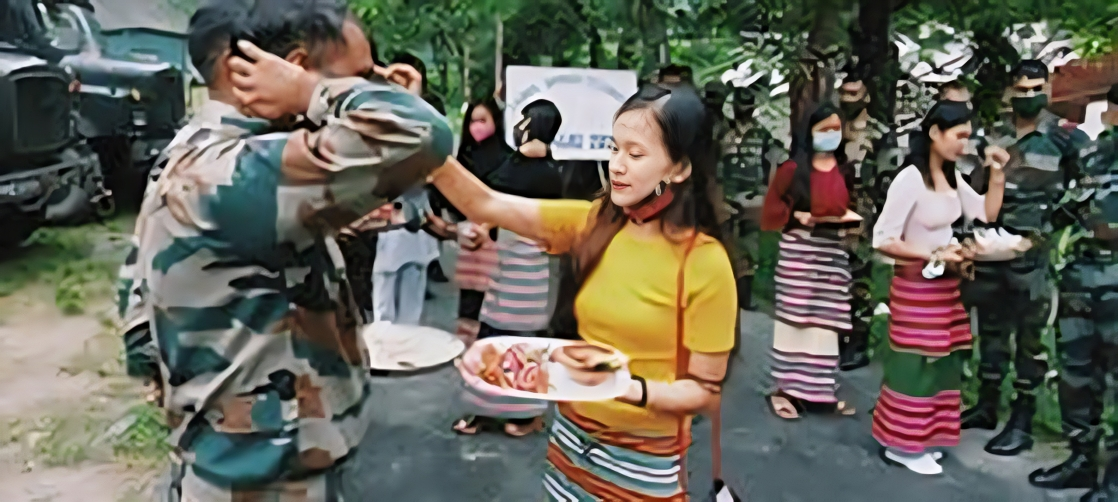Time to align with untainted Bharatiya philosophy
Updated: February 1, 2023 13:33
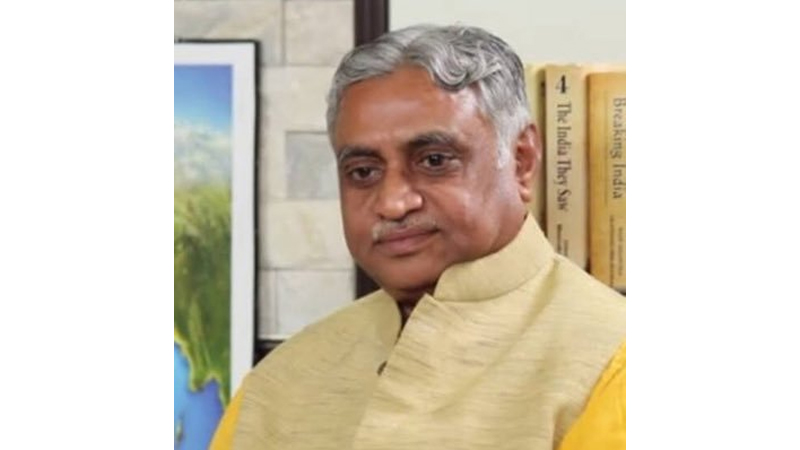
As per a social philosopher, ‘Unless we decide who we are as a people we cannot decide what our priorities can be.’
In the entire world, perhaps there is not a single country, except Bharat, where society is in confusion or the difference of opinion is so prevalent over who we are, who our ancestors were and what our history is. Bharat, despite being the cradle of human settlement, the richest and the mightiest of all human civilizations, there is no consensus over this fundamental question. This lack of consensus shows that we are not willing to identify and actualize our real identity, our “swa” as a unified society and one nation.
Following the devastation of World War II in 1945, Britain, Germany and Japan turned a new leaf. An unceasing struggle of hundreds of years culminated in Israel reclaiming its nationhood in 1948. Having suffered at the hands of invaders and exploiters for many centuries and over a 100-year-long freedom struggle, Bharat too attained independence in 1947. All five of these countries began anew at almost the same point in time, yet today, the socio-economic progress made by the aforementioned four countries is incomparable to that of Bharat. What might be the cause of the same?
As per a social philosopher, “Unless we decide who we are as a people we cannot decide what our priorities can be.” The absence of such an agreement is the underlying difference between the economic progress of Bharat and those countries that marched with freedom simultaneously.
In his monumental essay, “Swadeshi Samaj”, Gurudev Rabindranath Thakur opined, “First we have to be what we are.” This is an amazing coincidence that the buzz of the country’s 75th Independence anniversary celebrations is juxtaposed with an emergent identity search, where Bharat is attempting to redefine itself with its “swa” as the focal point. However, why there is an aversion to this tenable search is yet another question worth pondering over.
Modern history of Bharat is replete with incidents and anecdotes of the suppression and negation of that “swa” of Bharat, which is famed, immortal and pre-eminent. Doing so is famously(falsely) referred to as being “liberal-intellectual and progressive”. It is evident that having failed to define its developmental goals in the light of its “swa”, Bharat’s potential does not reflect in the progress made by the country thus far. Unfortunately, the many opportunities for the blossoming of this “swa” were repeatedly stubbed up early on.
It is common knowledge that “Vande Mataram” became the slogan of the people’s movement of 1905 in opposition to the Bengal partition. “Vande Mataram” inspired innumerable youth and freedom fighters to take up the freedom struggle and sacrifice themselves for the cause. “Vande Mataram” was the spontaneous eruption of the “swa” of Bharat. All national-level sessions of Congress were witness to proud renditions of the song. Stalwarts like Pandit Omkarnath Thakur, and Pandit Vishnu Digambar Paluskar lent their musical acumen to such renditions in countless meetings of the Congress. It was equally a source of inspiration to both Hindus and Muslims. Then all of sudden, in the year 1921 it became a communal, Hindu song. But how? The mindset behind this thinking needs to be understood. The fifteen-year-long natural expression of patriotism since 1905 was abruptly stalled and labelled “communal”. Investigating the “what” and “why” of these series of events is crucial.
In another incident, Swami Vivekananda’s disciple, Sister Nivedita, put together the first-ever model of the flag of independent Bharat in the year 1905. The symbol of Vajra made from the bones of Rishi Dadhichi was inscribed on it. Thereafter, she wrote, “Unfortunately, we had a Chinese war flag as a model in front of us, so we made it black on red. But it doesn’t appeal to Indians. So, the next one will be yellow on saffron.”. In the 1906 annual meeting of Congress, a saffron-coloured flag with a yellow Vajra symbol was displayed.
Thereafter, several samples of various flags were proposed. In 1921, a tricolour flag with a (Charakha) spoked wheel symbol was declared the representative embodiment of all the communities of Bharat. A group of Sikh representatives led by their leader Master Tara Singh met with Mahatma Gandhi in 1929 and opposed the idea of representation of different communities through different colours in the flag and insisted on the need for one national flag that conveys the unity among the many communities. He added if they were stuck on the idea of representation of different communities through varied colours then the yellow colour, representing the Sikh community, must be added to the flag. A Flag Committee was constituted by the Congress Executive Committee comprising Pandit Jawaharlal Nehru, Sardar Patel, Maulana Abul Kalam Azad, Master Tara Singh, Pattabhi Sitaramaiah, Kaka Kalelkar and Dr Hardikar. The Flag Committee in turn solicited comments (over the objections raised against the proposed flag and suggestions) from the State Congress Committees and common people.
After considering all objections and suggestions the Flag Committee submitted its report that said: “We feel the flag must be distinctive, artistic, rectangular and non-communal. It was decided unanimously that it should be of one single colour except for the colour of the device. If there is one colour. And if there is a colour that is more distinct than others, one that is more acceptable to the Indians as a whole, even as it is more distinctive than another, and the one that is associated with this ancient country by long tradition, it is the Kesari or—saffron colour. Accordingly it is felt that the flag should be of the Kesari colour except for the colour of the device. That the device should be the Charkha. The committee have come to the conclusion that the Charkha should be in blue. Accordingly we recommend that the National Flag should be of Kesari or saffron colour having on it at the left top quarter the Charkha in blue with the wheel towards the flagstaff.”
Therefore, the committee unanimously recommended a rectangular saffron-coloured flag with a device Charakha in blue on it. Why then was this decision reversed? What is that underlying mentality that denied Bharat its intelligible, organic “swa”? These factual queries are worthy of consideration.
After Independence in 1947, the Tricolour representing prosperity, peace and valour with the dharmachakra or the wheel of dharma at the centre was accepted as our national flag. It is now our national flag. It is undisputedly the rightful duty of all Bharatiya people to respect and protect it and to glorify it with our responsible actions.
On similar lines, the educational reforms that were anticipated following Independence were also denied. Dr Sarvapalli Radhakrishnan, in the capacity of the Chairman of the University Education Commission, wrote unambiguously about the un-Indian character of education as follows: “One of the serious complaints against the system of education which has prevailed in this country for over a century is that it neglected India’s past, that it did not provide the Indian students with a knowledge of their own culture. It has produced in some cases the feeling that we are without roots, in others, what is worse, that our roots bind us to a world very different from that which surrounds us.”
“The chief source of spiritual nourishment for any people must be its own past perpetually rediscovered and renewed. A society without a knowledge of the past which has made it would be lacking in depth and dignity.”
“It was assumed that education should not stop with the development of intellectual powers but must provide the student, for the regulation of his personal and social life, a code of behaviour based on fundamental principles of ethics and religion. Where conscious purpose is lacking, personal integrity and consistent behaviour are not possible.”
These words are evidence that spirituality is the cornerstone of Bharatiya philosophy or view of life and our education system should have evolved in the same light. However, recommendations made by education commissions appointed by Congress-ruled governments itself were not implemented during Congress rule. When the people constituting those commissions and investigating the issues were their own party workers then who were the people who impeded the implementation of those recommendations? What thought process was at play then? Even to this day attempts to amend the prevalent education system are ridiculed and dubbed as saffronisation of education. What hidden motives fuel those oppositions need serious deliberation.
It is an undisputed fact that Sanskrit is the mother of all languages and is comprehensible for all Bharatiya people. Malaysia is home to a large Bharatiya diaspora. Shri Ramchandran, Hindu Swayamsevak Sangh pracharak in Malaysia, speaks Tamil. During his Sangh training, he attended two (20 days duration) camps in two different years in Tamil Nadu. For his third year of training, he spent 25 days in Nagpur where most lectures were delivered in Hindi and were incomprehensible to him. Later when those lectures were translated into Tamil for Tamil-speaking trainees, only then was he able to understand the content. He later shared with me that out of the twenty-five lectures delivered he could fully comprehend one lecture without translation and that lecture was delivered in Sanskrit. This is glowing evidence of the fact that Sanskrit is closer to all the Bharatiya languages. Bharat Ratna Dr Babasaheb Ambedkar and his contemporaries (ministers) were aligned on the opinion that each student in Bharat must undergo Sanskrit education. The wealth of Bharatiya knowledge is encoded in Sanskrit and all the languages spoken in the Bharatiya subcontinent have emanated from Sanskrit or have much in common with Sanskrit. The suggestion is pertinent even from the point of view of realising the Bharatiya view of unity and integrity (ekatmata). (which is the essential part of the Bharatiya worldview). However, which ideology deemed it right to overlook an invaluable suggestion as this must be ascertained.
Most modern-day academicians are of the view that primary education must be imparted in the pupil’s mother tongue. Education in one’s mother tongue is crucial as it enables conceptual clarity when learning new subjects and fluent expression of one’s own ideas and knowledge. If the aim is to make fluent English speakers out of every student then imparting all subject lessons in English is not necessary. In any case, only a minuscule 9% of humans across the globe obtain education in a foreign language or a language other than their mother tongue. Bharat is a key contributor to that 9% figure. Education in the English language has been so hyped here that the students pursuing education in their mother tongue develop a sense of inferiority in comparison to their English-educated peers. This is contrary to the “swa” of Bharat. Despite innumerable thinkers, including Mahatma Gandhi emphasising the need for introducing the mother-tongue, especially in primary education, the outcome is contrary to the expectations. Why is that so?
With a maximum share in global business, Bharat flourished prosperously for an indefinite period of history. Ours was not an “agrarian economy”. We were known for the trade of leather products, metals, timber, statues and stone sculptures, textiles, spices, diamonds and precious jewels across the world. Bharatiya merchants have been trading across oceans for millennia. Therefore, it is more appropriate to call ourselves an industry-centric economy instead of an agrarian economy. Home-based cottage industries were the originators of those goods and the families running those units resided in the villages of Bharat. Villages of Bharat were opulent. But influenced by the European mindset, post-Independence Bharat adopted an urban-centred economic development model. Consequently, cities became overcrowded and over-competitive, crimes rose and familial ties weakened, leaving the villages neglected and backward, lacking basic amenities for living. Urban living came to be interpreted as progressive and rural dwelling was deemed regressive. Industrial Revolution-induced profit-maximising mentality trapped man in the cobweb of greed.
The unique feature of the Bharatiya view of life is that it equally emphasised the importance of both material progress and spiritual growth and not just one at the exclusion of the other. A verse from Isavasya Upanishad elucidates one who relentlessly pursues material prosperity only enters into deep darkness. In the same verse, it is said, one who single-handedly pursues spiritual progress only enters even greater darkness. The Upanishad coveys pursuing material prosperity and spiritual progress simultaneously as the true purpose of life. The village life is the ideal setting for the same. In a village, one earns less, but expenditures too are limited. Therefore, one needn’t hustle to afford himself a good quality of life and a decent income. The rural environment provides for both means of livelihood as well as ample time for one’s spiritual meditation (sadhana). It is for this reason that Mahatma Gandhiji also advocated for a village-centric economic model for independent Bharat. His book, “Hind Swaraj” revolves around the same theme. The Constituent Assembly, while deliberating on the ratification of the Constitution between November 19 and 22, 1948 also expressed their hopes to embark on our journey of Gram Swaraj. However, embroiled in the socialism-capitalism duel of the West, our inclusive, eco-centric model of progress was forgotten. Past President Dr Abdul Kalam also appealed for the remodelling of Bharatiya villages and bringing them up to speed with the urban centres. The eminent thought espoused by Bharat is that to live a prosperous, joyous, healthy and spiritually bountiful life is the essence of life. It was also the hallmark of Bharatiya life—an optimal expression of the “swa” of Bharat. How did we fail to adopt this approach?
Gurudev Rabindranath Thakur, in his essay, “Swadeshi Samaj,” writes, “Welfare state is a western construct, it is not Bharatiya. Traditionally, Bharatiya society was never state-dependent. By the very definition swadeshi samaj is that society which is least state-dependent.” Traditionally, only justice, foreign relations and defence were under state jurisdiction. Other concerns like education, healthcare, trade and finance, arts and culture, temples, fairs and the lore were all channelised by the societal arrangement directly.
Swami Vivekananda’s disciple, Sister Nivedita said, “The society whose members instead of withholding their remuneration with themselves share it with the larger society with the accumulated wealth of remunerations, in turn, build a wealthy and prosperous society, which in turn makes each individual of the society wealthy and prosperous. But in a society where people hoard their remuneration with themselves, instead of sharing it with the rest of the members of the society, only a few individuals become wealthy and prosperous, while the larger society remains poor.” To give to the society with a sense of belongingness and that all this belongs to the commonwealth and to return it to the society is akin to absolute fulfilment. Therefore, the Vivekananda Kendra prayer goes like:
जीवने यावदादानं स्यात्
प्रदानं ततोSधिकम् |
इत्येषा प्रार्थनास्माकं भगवन् परिपूर्यताम् ||
Meaning: “Whatever we receive in life let us give far more than that. Oh Almighty! Almighty! Grant our wish.”
We receive from society. To give back is the essence of Dharma. Religion or worship is not the same as Dharma. Worship is a means to attain Dharmic attitude. But Dharma is to conduct oneself in the spirit of giving back to society. To offer alms is charity, but to give back to society is Dharma. As per Bhagini Nivedita, enriching common social wealth is Dharma. Dharma is indiscriminate, it weaves the society into a whole, beholds, protects and sustains it. It is the foundation on which Swadeshi Samaj is built.
The essence of Dharma sat in the eye of the mind of the architects of Bharat at the time of Independence, which must be why “dharmachakra pravartanaya” (for the propagation of the timeless cycle of Dharma) and “satyam vad, dharmam char” (speak the truth and act in dharma) are inscribed in the Lok Sabha and Rajya Sabha of Bharat respectively. The wheel in the centre of the national flag is that very “dharmachakra” (wheel of dharma) and the Supreme Court upholds the directive “Yato Dharmastato Jayah” (where there is Dharma, there will be victory). Wheels are designed to turn. Every act of giving back to the society is an act of Dharma and that gives a push to the wheel of Dharma and keeps it rotating, gaining momentum.
The Dharma that was the premise of the imagination of the Lok Sabha, Rajya Sabha, the Supreme Court and the national flag is absent in all social dialogue. In fact, discussing dharma is now considered “communal”. While the term secularism, which was considered unnecessary after detailed discussions and a mutual consensus was in great connivance, discreetly and forcibly added to the unamendable Preamble of the Constitution. That non-Bharatiya (un-Indian) word is being indiscriminately pushed around everywhere.
Which ideology breeds the current scenario? This question must be probed. The only way to realise the long-subdued “swa” of Bharat is to extricate ourselves out of the shackles of this non-Bharatiya (un-Indian) thinking and recalibrate our thought process in alignment with the untainted Bharatiya philosophy. And when with our efforts it proudly blossoms in all its glory Bharat will confidently march to fulfil its promise to the world.
(This article written by the Sahsarkaryavah (joint general secretary of the RSS, Dr Manmohan Vaidya was first published in Sunday Guardian on August 13, 2022 –https://www.sundayguardianlive.com/opinion/time-align-untainted-bharatiya-philosophy )

